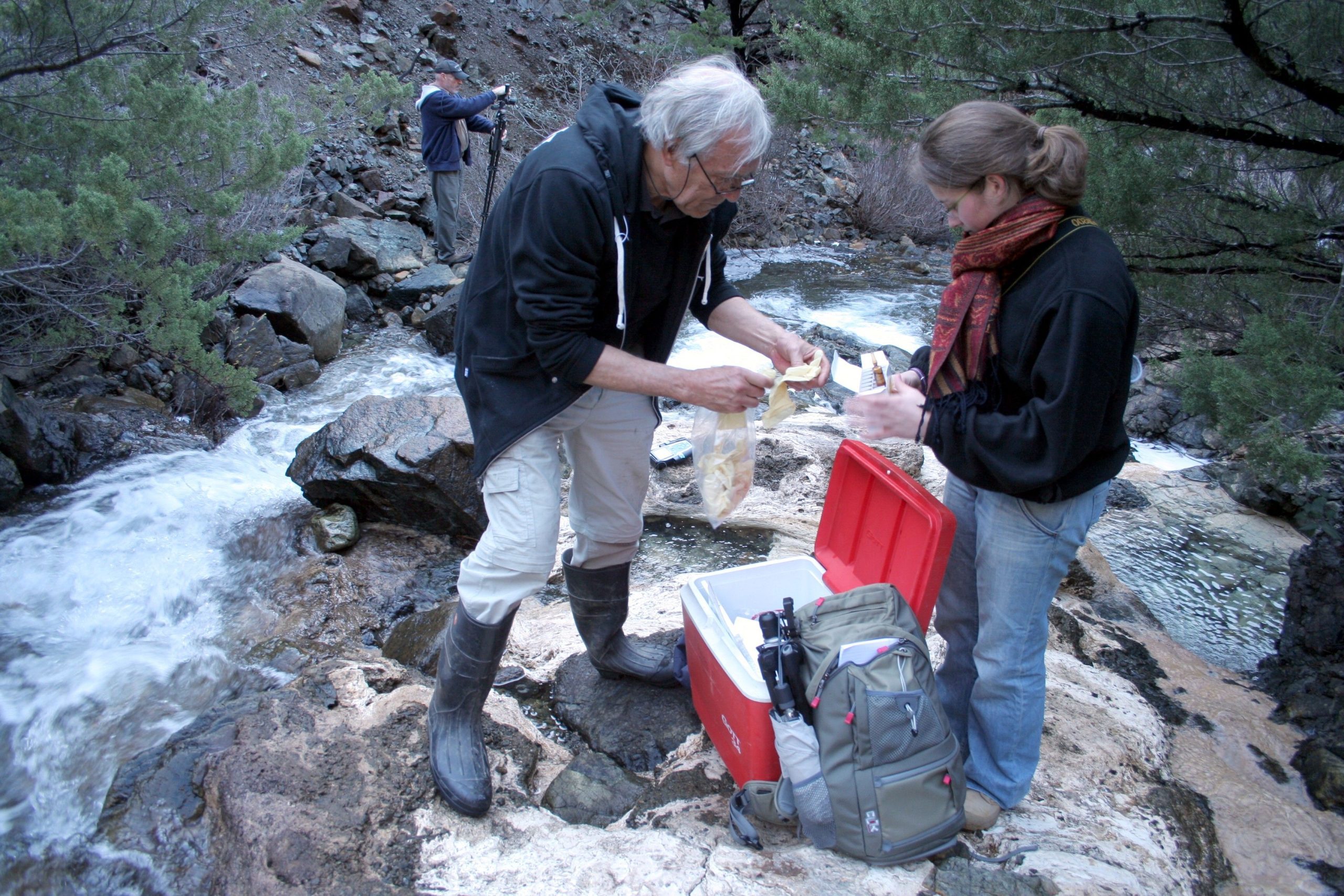Newly discovered microbes from an old volcanic region in California may shed light on the origins of life, Prof. Gijs Kuenen (AS faculty), one of the discoverers, believes.
They thrive in the most extreme environments; in scorching hydrothermal vents at the bottom of the ocean, beneath ice sheets where temperatures plummet far below zero and in the walls of nuclear reactors, to name just a few places. Microorganisms are tough little things. Still microbiologist Gijs Kuenen could not have been more surprised when he found life in three highly alkaline springs in an old volcanic region in Northern California.
Until a few years ago no biologist even took the effort to look for life in these springs, which had been a popular research spot for geologists for decades. The conditions were thought to be too harsh for life.
“We are still wondering how the microbes we found are able to survive”, says Kuenen, who for three succeeding years took samples in the springs and isolated and sequenced the microbes together with colleagues of the Craig Venture Institute.
Though the water contains a lot of hydrogen – a potential energy source for microorganisms – with a pH of 11.8 its alkalinity is extreme. What’s more, the water hardly contains any source of phosphor, nitrogen or sulfur, which all living creatures need as these are the building blocks for cell material. Nor are there any molecules that microorganisms can use as electron acceptors (to consume their food, or “breathe”), such as oxygen, nitrate or sulfate.
Each spring was fed by a unique combination of one or two types of groundwater. The composition of the microbial population in each of the springs reflected their chemical composition. The microbes in the deep groundwater turned out to be a unique combination of the Chloroflexi and Clostridia family, and a few other microorganisms like methane producing microbes, which were totally unknown. The two other springs contained Betaproteobacteria as dominant microbes, among which hydrogen eating bacteria are common. The researchers published their findings this week online in Proceedings of the National Academy of Science.
The springs are among the few active terrestrial sites on earth, where so called serpentinization occurs. They are fed by rainwater that seeps down and reacts with silicates rich in iron such as olivine to produce a new suite of minerals as well as hydrogen, methane and highly alkaline fluids. This is a common process at oceanic tectonic plate boundaries, where seawater interacts with deeply buried rocks, but very rare elsewhere.
Because of the pristine and harsh nature of their living environment, these microbes could be crucial to understanding the origins of life on Earth, Kuenen believes. “We think that the living conditions in that spring very much resemble the conditions on Earth more than 3 billion years ago. We now have at least one of the microbes in culture in our laboratory and so we can start unraveling its mystery.”
Shino Suzuki et. al., Microbial diversity in The Cedars, an ultrabasic, ultrareducing, and low salinity serpentinizing ecosystem, PNAS early edition, 3t September 2013
doi/10.1073/pnas.1302426110



Comments are closed.